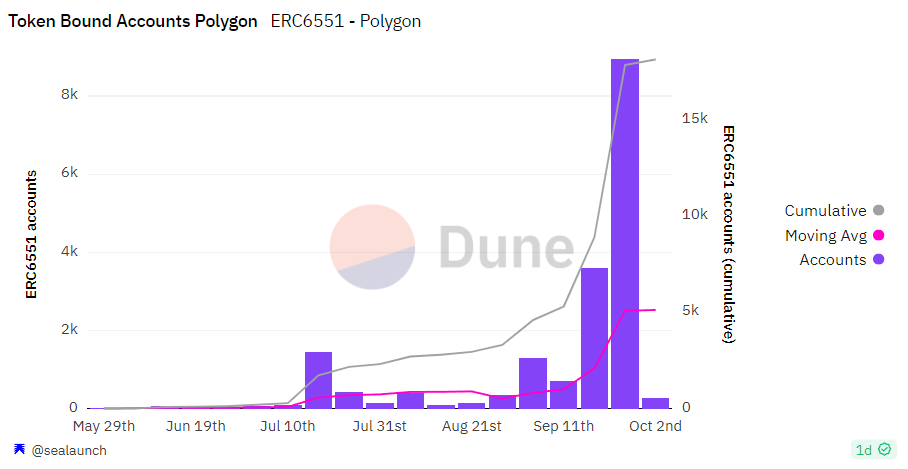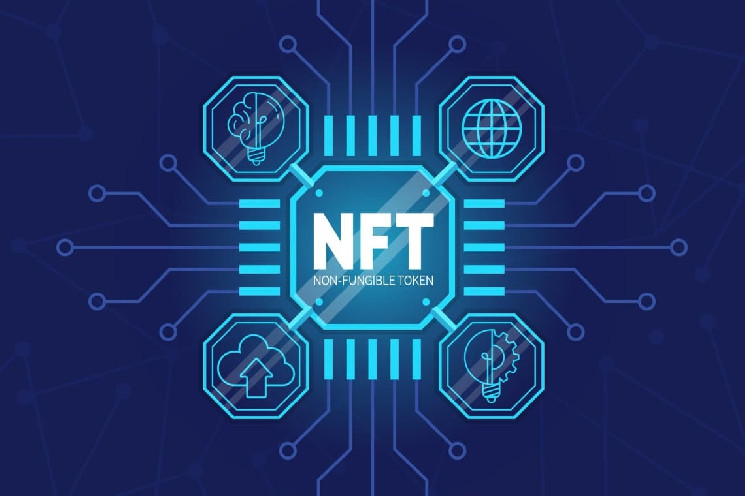In May, bound account tokens (TBAs), also known as NFTs, which function as crypto wallets, were introduced to the Ethereum market for the first time.
This type of non-fungible token, represented by the ERC-6551 token standard, which improves some aspects of the well-known ERC-721 standard, has been a huge success on Polygon for a few months now.
Let’s take a look at how these special NFTs work together and see some numbers on their growth.
All the details below.
What is ERC-6551: the token standard that is revolutionising the NFT and crypto wallet market?
ERC-6551 is a token standard that allows developers to improve the design of NFTs to the point where they take on the appearance of a crypto wallet.
In February 2023, the standard was publicly proposed to the Ethereum community via an ‘improvement proposal’ (EIP 6551), with the first experiments starting in May.
The aim was to overcome certain limitations of ERC-721 and make the market for non-fungible tokens more dynamic and interactive.
As mentioned above, the main feature of this category of tokens is that they act as real cryptocurrency wallets, capable of holding assets.
This is the first case in crypto history where a token contains other tokens inside it.
This feature was described by Benny Giang, co-author of the proposal that revealed ERC-6551, as “token bound accounts” (TBAs).
Another very interesting property of this innovative class of NFTs is that they can sign cryptographic messages and verify signatures, interacting directly with the smart contracts of decentralised applications.
In this way, the social governance property of NFTs is introduced, allowing the implementation of dynamic personalities and characteristics on these tokens, which are no longer bound to simple collectible JPGs.
The new applications and use cases that could emerge from this innovation in the future are endless, especially in the gaming context where AI could revolutionise an entire sector.
With ERC-6551 and its bound account tokens, web3 game developers can introduce new use cases such as inventories, equipment and other mechanisms that require more resources to interact with each other.
For the development of the Ethereum ecosystem, this is an important milestone to experiment with more and more new ways of social interaction in the blockchain world.
Describing the potential of his invention, Benny Giang said:
“Now that an NFT has its own account address, it could be a signatory on a multisig, it could have its own ENS subdomain. It’s like giving an NFT a passport”
On a more technical level, the ERC-6551 uses an ERC-721 NFT-compatible unlicensed registry that acts as a directory for TBAs. The registry distributes a proxy contract for TBAs by inheriting the metadata of the original ERC-721 token.
The assets contained therein as NFTs or fungible tokens can be transferred to other TBAs via a function on the proxy contract.
The growth of token bound accounts on Polygon in recent months
In recent months, more specifically since July, the trend of NFTs acting as crypto wallets, also known as ‘token bound accounts’, has landed on Polygon’s blockchain in significant numbers.
According to data from Dune Analytics, 18,116 ERC-6551 accounts have been activated to date, with 7,581 NFTs being held within so-called TBAs.
The real boom of this innovation on Polygon took place between the end of August and September, when the statistics skyrocketed.
In the last week of September alone, more than 8,900 ERC-6551 accounts were activated.
The NFT collections on Polygon that use this standard the most and implement the crypto wallet feature are Dippi TBA, Lens Protocol Profiles and OrbSoulbound.
Together, these three collections manage 77% of all accounts created, leaving little room for competition.

If we take the general market, where the Ethereum network is also present, as a reference, we can see from the data a discontinuous but overall growing activity from May until today.
In total, 26,334 token-bound accounts were activated across all EVM chains, through 1,520 transactions, with 11,270 NFTs held within them.
In the wake of Polygon’s success, it is confirmed that the highest number of TBA activations was recorded at the end of September, with more than a third of accounts created between 25 September and 1 October.
In terms of pure transactions, we can see that there was a drop in activity from mid-July to mid-August, with the metrics starting to pick up from 21 August, with 119 transactions recorded in the first week.

Given the potential that the ERC-6551 standard has brought to the market, we believe that more and more TBA accounts will be created in the coming months to provide users and developers with a dynamic crypto wallet for NFTs and other crypto assets.
Most likely, this trend will expand and become mainstream as web3 game producers begin to implement TBAs within their virtual experiences, creating new ways to experience sociality in the context of blockchain.
 en.cryptonomist.ch
en.cryptonomist.ch
